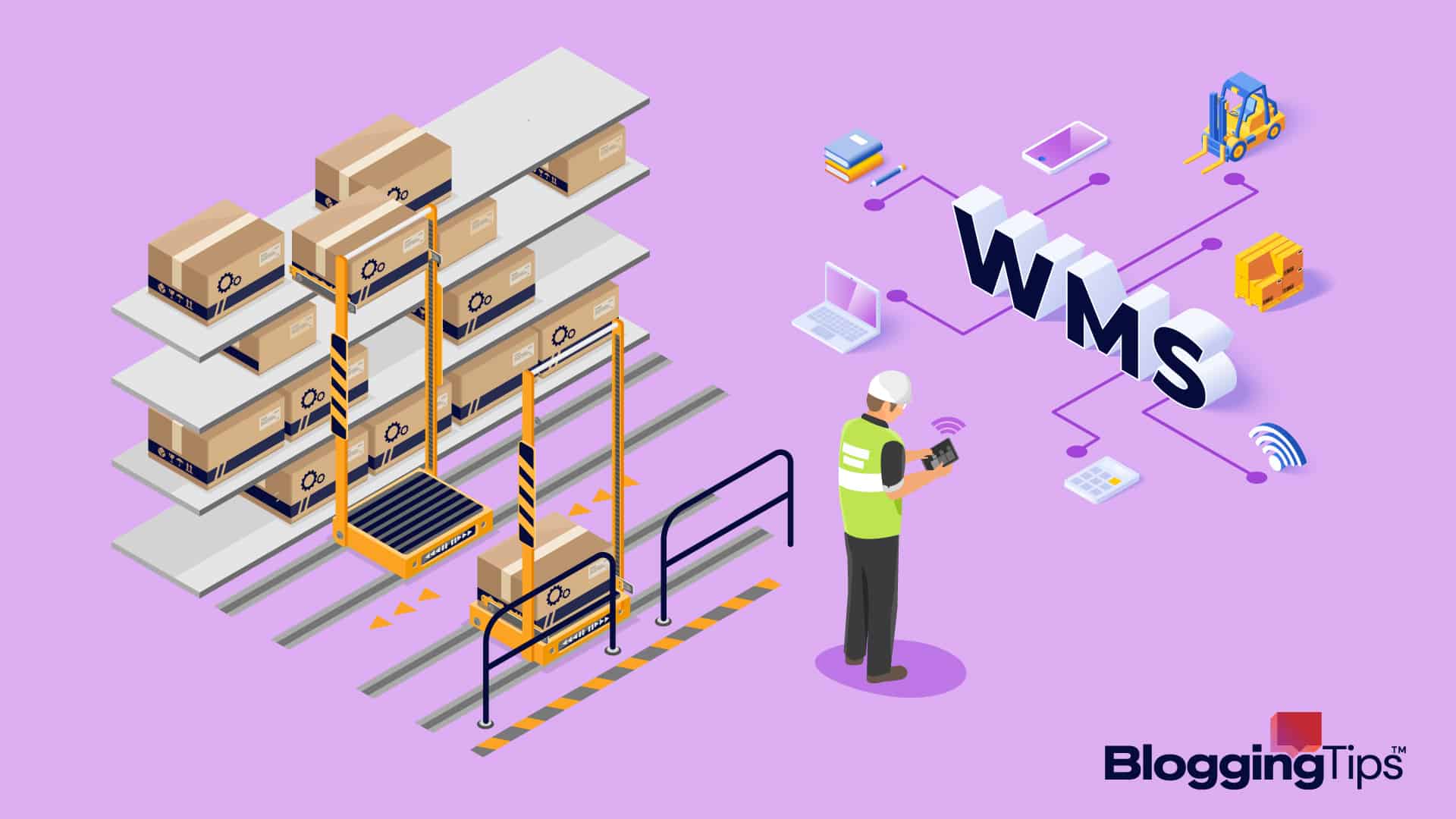Running an e-commerce business can be challenging, as you have many moving pieces to attend to at a given time. However, with proper supply chain management, you can always be on top of your game and get your warehouse operations under control.
By adopting a warehouse management system (WMS), you avoid falling into the pitfall of micromanagement and focus on the more pressing business matters.
Tracking inventory, labor management, and dynamic route planning for your shipments can all be handled by a cloud-based solution that is easily accessible from all your devices.
Follow along as we explore the best ways to automate your warehouse operations. We’ve tested the five best warehouse management systems to ensure you get the right WMS solution for your warehouse or distribution center!
What Is a Warehouse Management System?
Think of a warehouse management solution as an automated system that handles all your warehousing operations. A WMS solution integrates different warehouse operations into one coherent workflow, ensuring duplication errors are a thing of the past.
Warehousing tasks like inventory management, asset tracking, and shipping management are fulfilled through automated systems that reduce operating costs.
It’s also worth noting that the cloud-based client for WMS systems has contributed significantly to streamlining warehouse management.
You can have real-time inventory visibility that feeds into your transportation management systems, giving accurate status updates for all your packages.
This way, order fulfillment is as smooth as possible, ensuring customer satisfaction.
In addition to offering inventory control, warehouse management software provides third-party logistics services that encompass everything from order fulfillment to returns and everything in between. This helps you build a unified system without clutter or redundancy.
Efficient workflow management gives you a competitive edge and ensures your warehouse employees get a frictionless experience with the system.
The aim of automation isn’t to replace your human workforce. Instead, you’re empowering your employees to take on more challenging warehousing processes with comprehensive information offered by the warehouse management software.
Overview:
The Best Warehouse Management Systems (Overview)
We’ve included an overview of our top picks below. For detailed information on each pick, scroll down.
Top 5 Warehouse Management Software
Now that you understand how warehouse management software can transform your supply chain processes, let’s explore some of the best solutions on the market.
We included diverse options that fit different business models to ensure you land on the perfect pick, whether you’re running multi-warehouse operations, distribution centers, or a single self-contained warehouse.
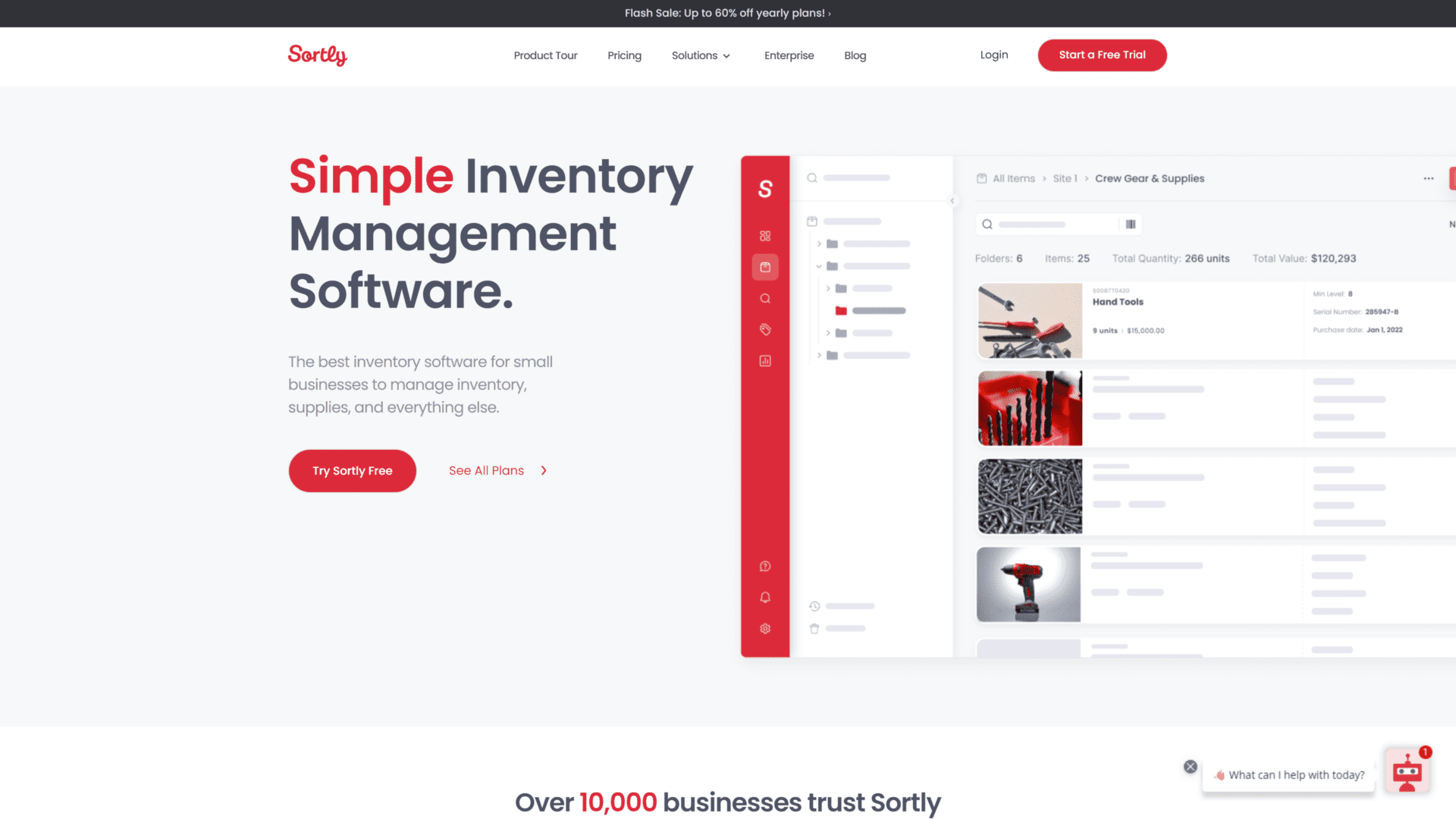
Sortly implements some innovative twists to the conventional inventory tracking process, making it an enticing solution for small businesses.
The warehouse management software offers tight integration with mobile devices. You can create custom QR codes and use the built-in camera feature in the Sortly mobile app to scan different items.
It’s also worth noting that Sortly encourages users to add photos for different packages, making it easier to identify items at all stages of the supply chain.
The WMS system acts as a full-fledged team management tool, allowing you to assign different roles to your team members.
Each job position comes with a different data clearance, ensuring your warehouse workers have access to the data that directly assists their given tasks.
Features:
- Offers reporting tools that reflect your warehouse capacity and item shortage
- You can efficiently manage inventory by assigning barcodes or QR codes to different packages
- The warhorse software provides periodic reports, making cycle counting a less daunting task
- The user interface retains a minimalistic look without holding back on features
- Offers solid third-party logistics services free of charge
- The inventory management software can create custom CSV data sheets, making it easier to track inventory
Drawbacks:
- We hope Sortly explores more integration options, allowing you to customize your warehouse management experience even further
Price:
Sortly offers a variety of plans depending on the size of your warehouse inventory. If you’re dealing with less than 100 entries, the free version will suffice.
You get a first-hand experience of how the warehouse management software works before you drop your hard-earned cash for the paid versions.
For $25 a month, the WMS client lets you venture with up to 1000 entries, a great starting point for small businesses.
As your operations grow, the Ultra plan removes the inventory cap and gives you unlimited entries for $59 a month.
We appreciate how the warehouse management system scales up to your needs, so you won’t have to replace your WMS solution as your business grows.
Our Verdict:
Item mismatch should be a thing of the past, as Sortly offers an intuitive visual representation of your warehouse inventory.
Powered by personalized QR codes, your yard management will take a new turn to the best, and you’d genuinely wonder how you managed to go through all this time without a dedicated WMS client.
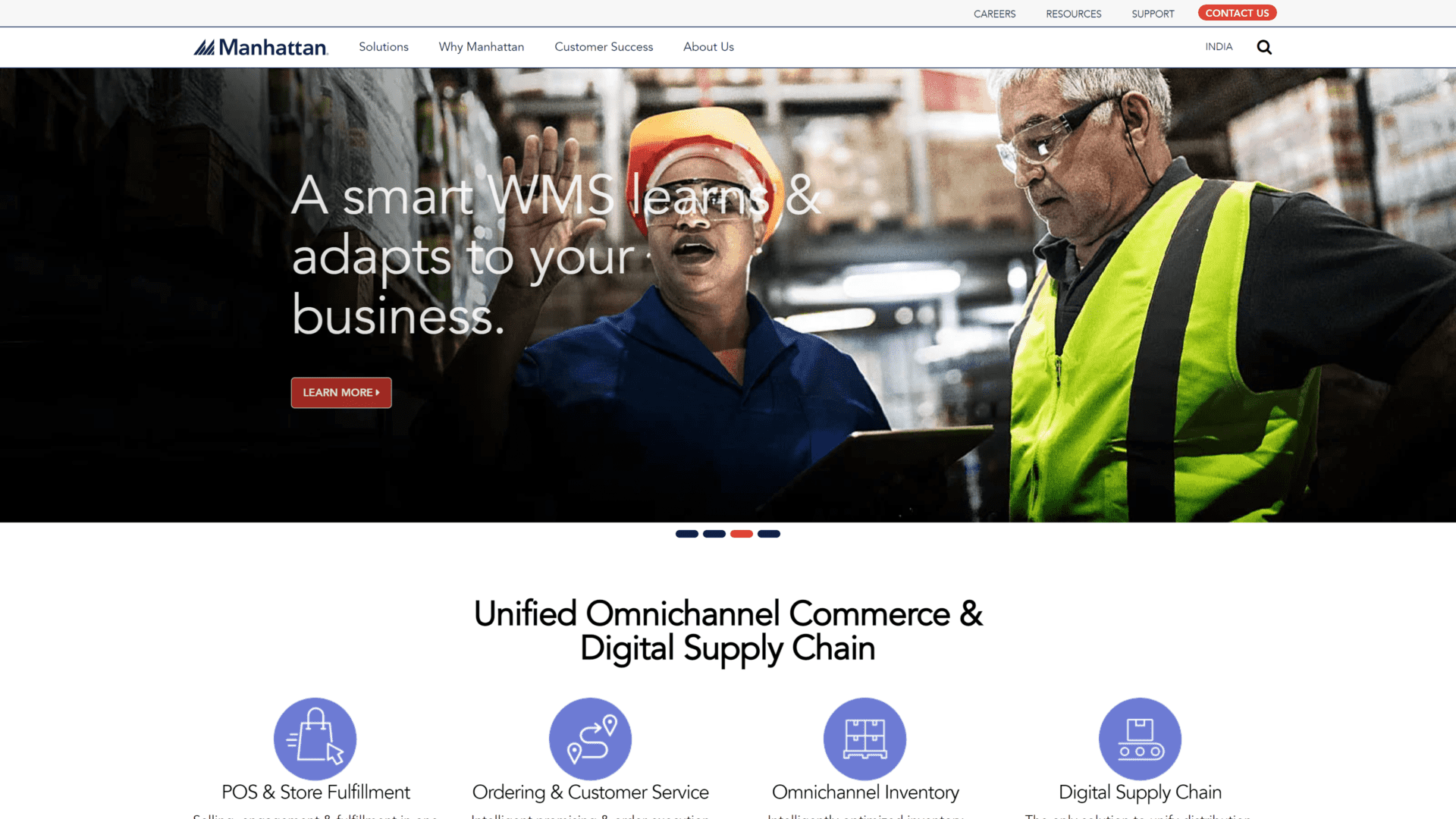
Our list’s next warehouse management system comes from non-other than Manhattan Associates. The company has years of experience in the business management game since it was first established in 1990.
Manhattan WMS stands out among other warehouse management systems by offering a specialized WMS team to do the SQL server scripting on your behalf.
For the uninitiated, this involves working with the industry-standard relational database system developed by Microsoft. The SQL server provides actionable insights, powerful analytics, and takes over transaction processing.
With all layers imposed on top of your conventional warehouse management software, you get exceptional depth and transparency over your entire supply chain operations.
Features:
- Allows for effortless robotic process automation by connecting to your warehouse’s material handling equipment
- Offers excellent workforce management tools with gamification to key tasks to achieve better engagement with the system
- Cross-docking is made possible thanks to the seamless transition between inbound and outbound transportation stations
- Gives you a detailed vendor performance report to ensure you’re addressing potential issues and maintaining customer satisfaction
- Security is one of Manhattan WMS’ strong suits, giving you peace of mind that your warehouse data is kept safe from prying eyes
- Manhattan WMS systems make it possible to schedule meetings with suppliers and warehouse teams directly from within the app
Drawbacks:
- The cost adds up quickly if you apply different customization options to your warehouse software
Price:
As Manhattan WMS offers personalized warehouse management solutions, the price of your plan can vary according to the different add-ons you opt for.
You can contact the company directly to discuss price plans and ensure you only pay for the specific services you need.
Manhattan WMS also offers one-on-one demo sessions where you are paired with one of their professional associates to walk you through the best ways of integrating their warehouse management systems into your current operations.
Our Verdict:
Manhattan WMS offers both cloud-based systems and on-device solutions, giving you more options for managing your supply chain.
We were impressed by how smooth order fulfillment is with Manhattan WMS. The systems take full advantage of artificial intelligence (AI) algorithms and machine learning models to automate the process.
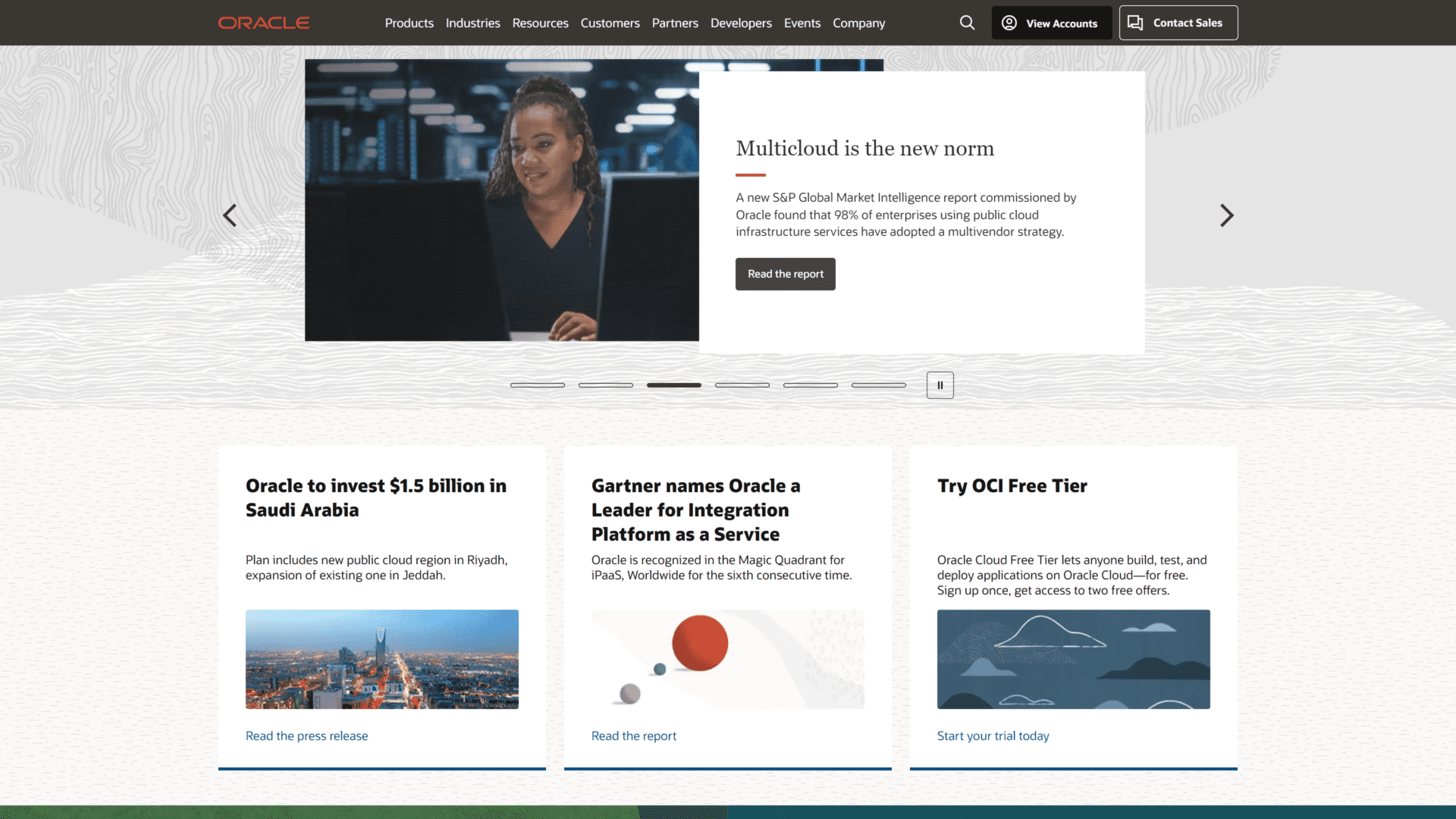
Most WMS solutions nail the inventory management part, but labor management is sometimes overlooked.
That’s why it’s refreshing to see Oracle building upon its solid foundation in warehouse automation to provide business owners with more tools and features to manage their warehouse employees.
Powered by industry-leading AI technology, Oracle can estimate the time required to complete different warehouse operations and provide you with Key Performance Indicators (KPIs) to assess your workforce’s efficiency.
Oracle is built from the ground up with ERP capabilities baked right into the app’s infrastructure. This enables you to automate repeatable tasks like invoice management and order fulfillment for optimal efficiency.
Features:
- Allows for radio frequency identification of warehouse items by simply scanning custom barcodes and QR codes
- Offers excellent inventory control with cycle counting and accurate inbound logistics
- Oracle warehouse management system gives you a real-time overlay for inventory tracking
- The mobile NetSuite connects all your employees’ mobile devices to the same network and delivers notifications with updated tasks
- Plays nicely with shipping management systems to ensure supply chain visibility remains front and center to the Oracle experience
- The mobile interface retains the same user-friendly data visualizations seen on Oracle’s web client
Drawbacks:
- Compared to other warehouse management systems (WMS), Oracle is on the pricey side
Price:
Oracle offers a free product tour to test drive their warehousing solutions and ensure the system is intuitive and easy to use.
Once on board, you must pay a one-time license fee on Oracle’s NetSuite core platform.
You can add whatever WMS modules you need to customize your warehouse manager.
You’ll have to contact Oracle’s customer services to get the exact pricing roadmap for your chosen inventory management system.
Our Verdict:
Labor management is an integral warehouse operation, and Oracle WMS capitalizes on such a notion.
In addition to offering basic supply chain management, you can assign tasks to your team members through real-time mobile prompts.
This ensures package handling, storage, and clearance for shipping are all executed with hive-mind accuracy and efficiency.
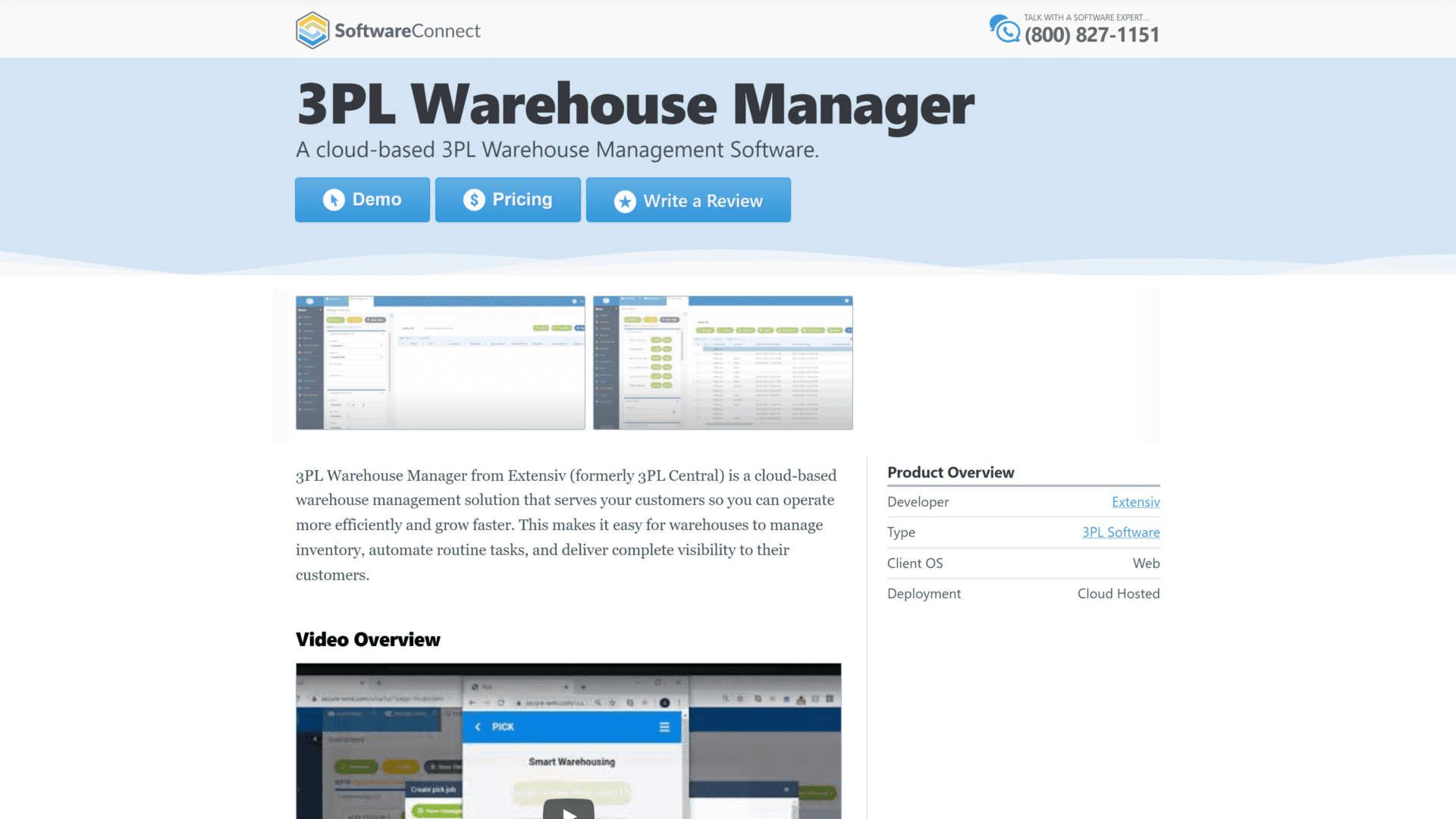
No list of the best warehouse management software is ever complete without a 3PL inventory tracking tool.
3PL is one of the WMS vendors that doubles down on software integration.
For instance, accounting software like QuickBooks is supported within 3PL’s work frame, allowing you to issue payrolls and keep track of your business’s financial reports in one place.
Your supply chain solution comes with barcode scanners, radio frequency identification features, and a QR code generator to ensure item mismatch is never an issue.
Managing inventory in a continuously updating distribution center can be a bit tricky. Luckily, 3PL makes adding and removing different products easy, so you always know what your warehouse space has in store.
Features:
- The cloud-based system gives you access to your entire warehouse operations no matter which device you’re using
- Allows you to generate and send invoices directly to your accounting team
- The web client offers an intuitive interface that makes it easy to add and remove different products and suppliers
- Inventory management benefits from smart radio frequency identification, minimizing human factor-based errors
- The warehouse management software is surprisingly scalable, offering yard management across multiple facilities
Drawbacks:
- We’d love to see an optimized mobile solution instead of relying on the web client
Price:
In terms of pricing, 3PL plans scale according to the number of employees you have on board, warehouse capacity, and add-on integrations.
You can get a free demo to test your warehouse management software first-hand and see how it fares with your Supply chain needs.
Our Verdict:
If your warehouse processes go beyond the basic inventory management and order fulfillment software, you should consider adopting 3PL for its flexible integration with business suite tools.
The cloud-based system works hand-in-hand with accounting solutions like QuickBooks, allowing you to create and receive invoices.
Such a simple feat makes a huge difference, as you won’t have to fiddle between different apps to get a task done constantly.
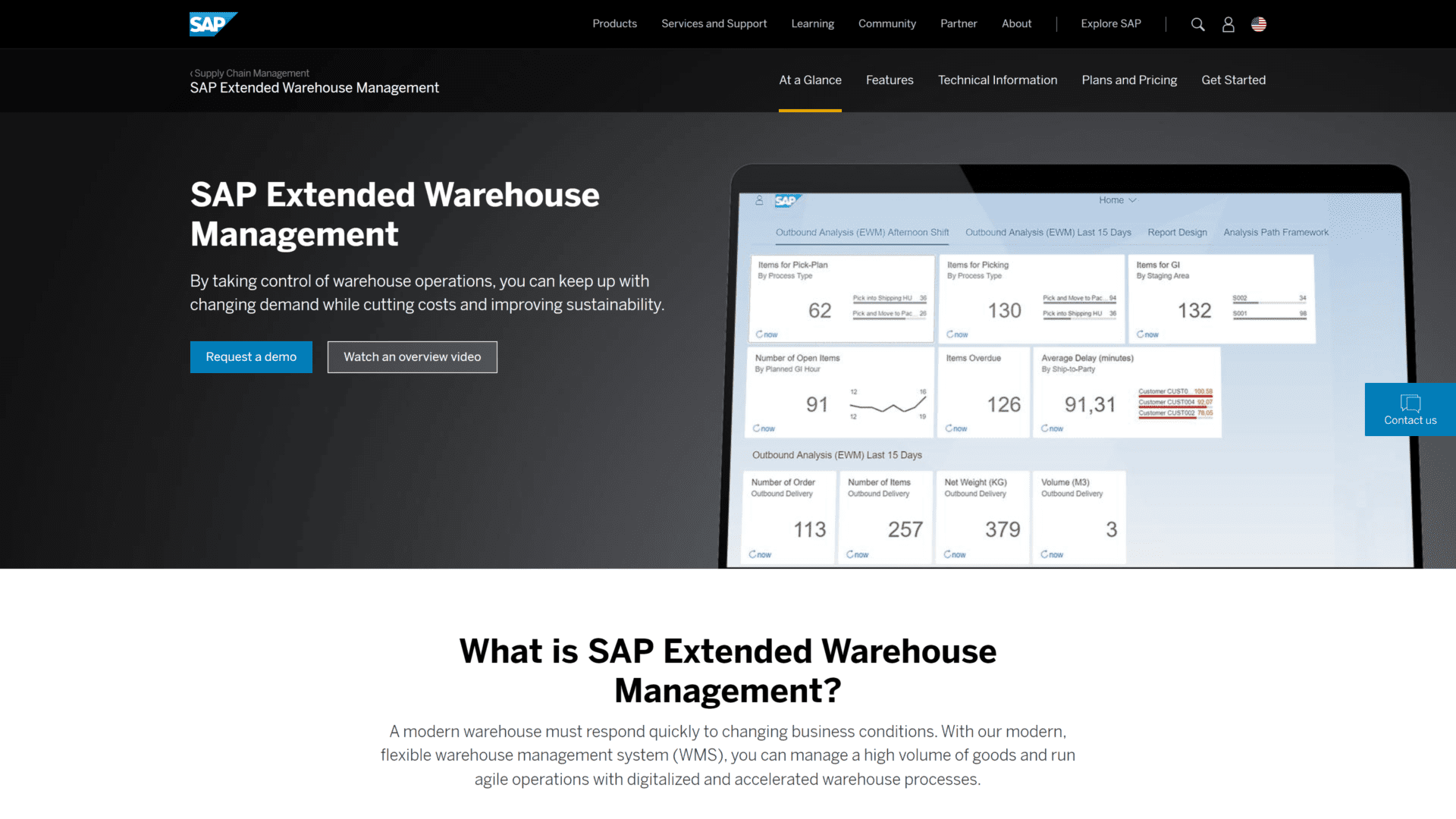
SAP remains a household name in the enterprise business space. When the company decided to dip its toes in the warehouse management game, we were intrigued to see how it fares in a reasonably competitive market. Spoiler alert! SAP delivers brilliantly.
The warehouse management software ensures all your supply chain decisions are based on reliable statistics.
Naturally, this makes business analytics a core part of the WMS experience. You’re always presented with glanceable charts and data visualizations to guide your hand when changing your business strategy.
It’s also worth noting that SAP Business One handles fairly complex warehousing tasks gracefully.
SAP’s automated operation framework fulfills inventory management across different warehouses, tracking bin geolocation, and pick and pack management.
Features:
- Allows for transportation management across different facilities
- Offers comprehensive reporting tools capable of pulling data from independent channels and blending it into one cohesive report
- Designed with small and medium businesses in mind, as it offers inter-departmental integration tools to accommodate growing ventures
- Unlike many warehouse managers, SAP Business One supports cross-functional analytics across all its plans and doesn’t gate such a core feature behind a paywall
- Offers warehouse management features like cross-docking, stock transfer reporting, and inventory tracking
- SAP Business One comes with integrated tools for managing labor to ensure maximal workforce efficiency
Drawbacks:
- It’s on the pricey side compared to other WMS systems on the market
Price:
SAP Business One is designed for Windows devices and offers top warehouse management features for growing businesses.
The starter package comes at $410 per year for a single user. You can get better deals if you’re managing a large team and want different warehouse personnel to access your system simultaneously.
You also get a demo version to try out and see how the warehouse management system can streamline your business operations.
Our Verdict:
SAP Business One is a warehouse management tool capable of automating repetitive tasks like order processing, shipment fulfillment, and inventory tracking.
The comprehensive reporting tools offer detailed analytics to help you assess your business’ performance. Such actionable insights can help you tweak your business strategy and pursue guaranteed growth opportunities.
How to Choose the Best Warehouse Management System?
Picking the best warehouse management system that feels like it’s tailor-made for your specific business functions can be a tricky process. Luckily, we’ll give you some pointers to nudge you in the right direction when choosing one WMS vendor over another.
Integration With Third Party Logistics (3PL)
As your business development plans come to fruition, you need to get a third-party logistics firm to take over your operations from different venues.
Your chosen warehouse management solution should effortlessly interact with your logistics providers and perform basic functions like transportation management.
Even if you’re not dependent on 3PL at the time being, you need to adopt a prospective mindset and account for potential expansions down the line.
Warehouse Size
WMS pricing varies depending on your warehouse capacity. When starting an online store from your basement, you can get away with a limited number of entries.
As your inventory expands and you start having multiple warehouses under your operations, scalable WMS tools can take on the added complexity with no issues.
You need to ensure your warehouse management system supports multi-facility operations and can keep track of packages moving between your main distribution center and regional warehouses until reaching the end customer.
Labor Management Systems
The importance of easy log-in time stamps shouldn’t be understated when choosing a warehouse management system that multiple employees will use.
If the system is counter-intuitive, your workforce won’t be as inclined to maintain a continuous log-in record, and in turn, your inventory tracking capabilities will take a hit.
Top warehouse management software provides tools for performance assessment, role assignment, and on-road tracking.
Benefits of Warehouse Management Systems
Finally, we’ve made a roundup with some of the key benefits of warehouse management systems to address any last-minute skepticism you might have once and for all. Follow along as we explore why business owners everywhere are all in regarding WMS software.
Efficient Operation
Has the notion of you not making the most of your warehouse’s capacity ever crossed your mind? By adopting warehouse management software, you should make the most of the resources you have at hand and assign your labor the right tasks to ensure minimal time waste.
This translates into an overall more efficient warehouse workflow as layout simulators can recommend the best equipment placement and arrange your products based on how frequently they go off the shelf.
Better Inventory Visibility
Radio-frequency ID tagging gives you real-time updates of where your items are at a given time. This removes much guesswork and ensures you’re always in control of your entire inventory.
Another important aspect of inventory management is putting together a reliable demand forecast. With the valuable metrics provided by your WMS client, you can predict which items will sell.
Warehouse analytics can help you make critical decisions more confidently as you’re backed up by statistical data at every step.
In addition to saving on the cost of operation, a WMS client will help you achieve business milestones much faster.
Excellent Business Relationships
Warehouse management software is less prone to errors, ensuring you’re forging a stronger relationship with your business allies.
Accurate delivery forecasts, on-point inventory tracking, and reliable demand forecasts cumulate to guarantee customer satisfaction and supplier trust.
This is the ultimate goal for a business owner, and your trusty WMS client ensures you’re getting one step closer with each and every order fulfilled.
Bottom Line
Now that we’ve walked you through some of the best warehouse management software on the market and given you the blueprint for choosing the system that better suits your business, you’re all set to take your warehousing operations to the next level.
In addition to tracking your inventory, a WMS client provides exceptional workforce management, performance assessment, and powerful statistics for actionable insights.
Let us know in the comment section which WMS vendor you’ve settled for and how your warehousing experience faired upon implementing AI-powered technology to your day-to-day business operations.
